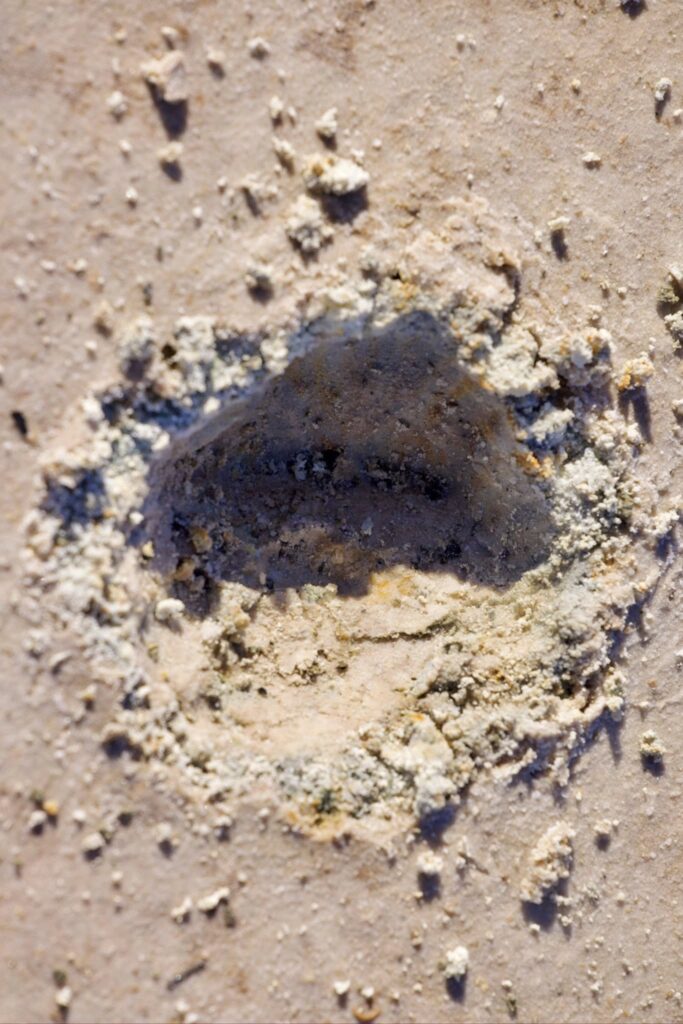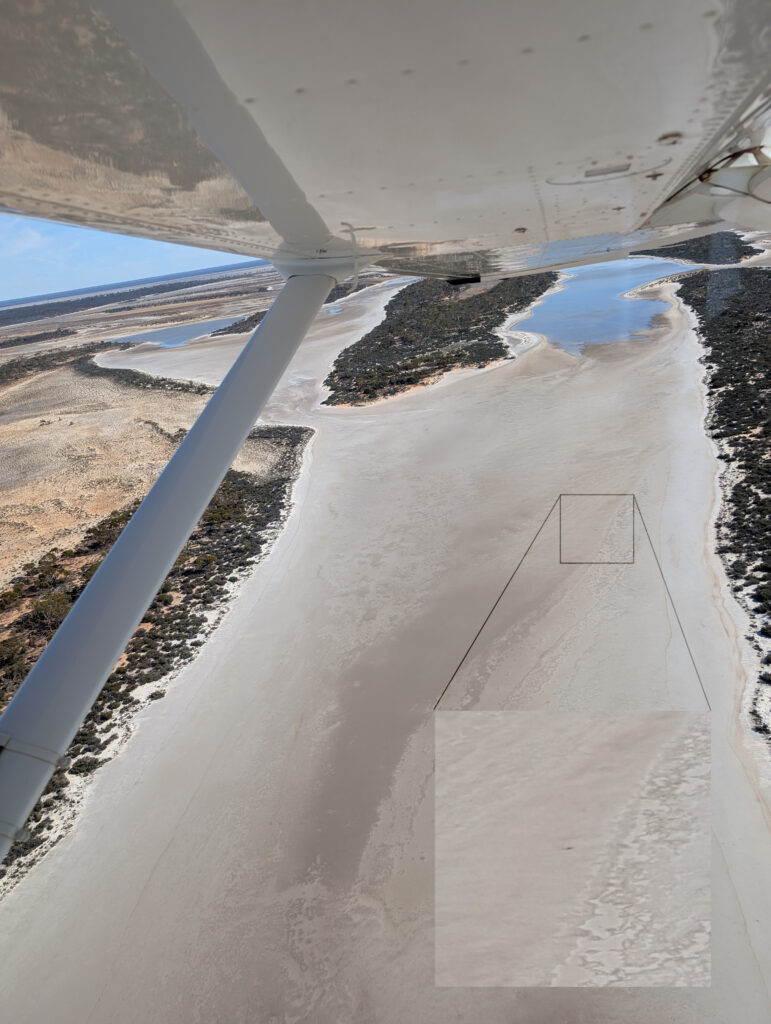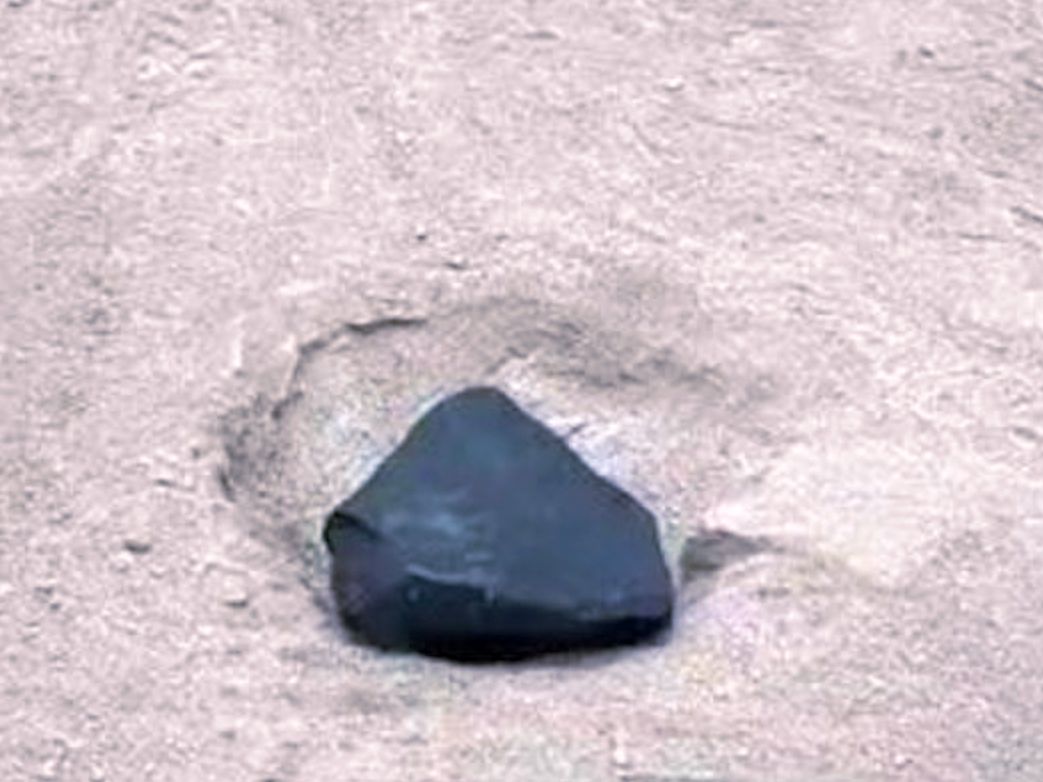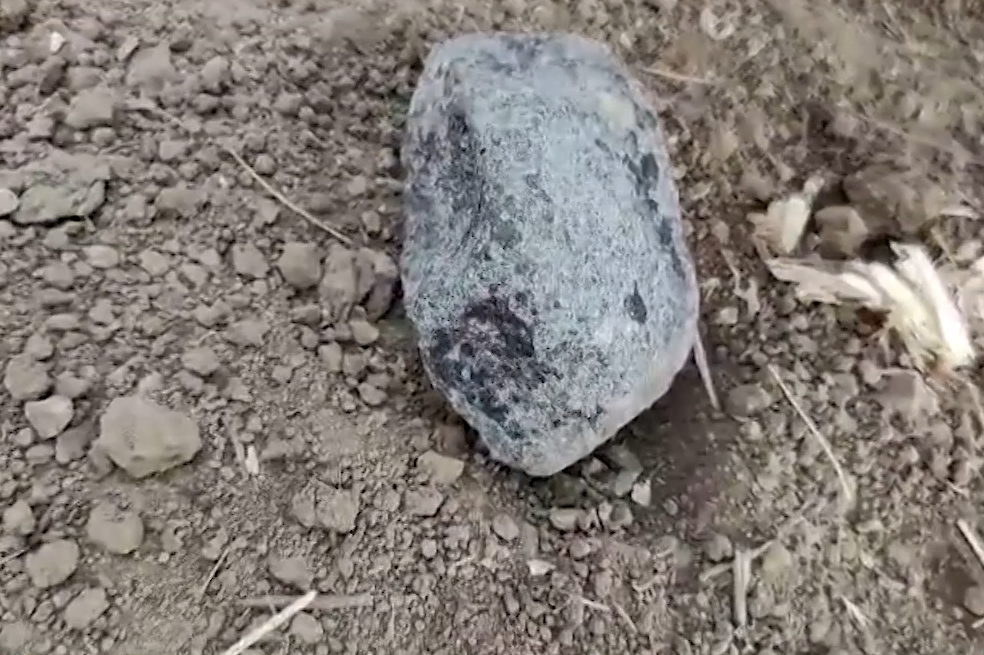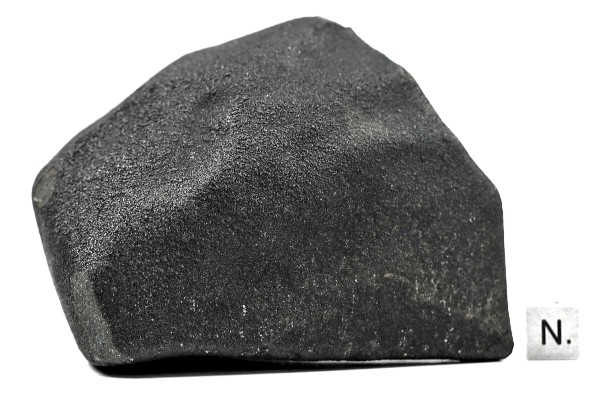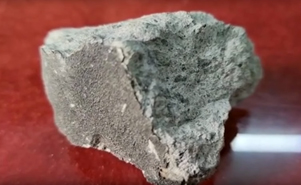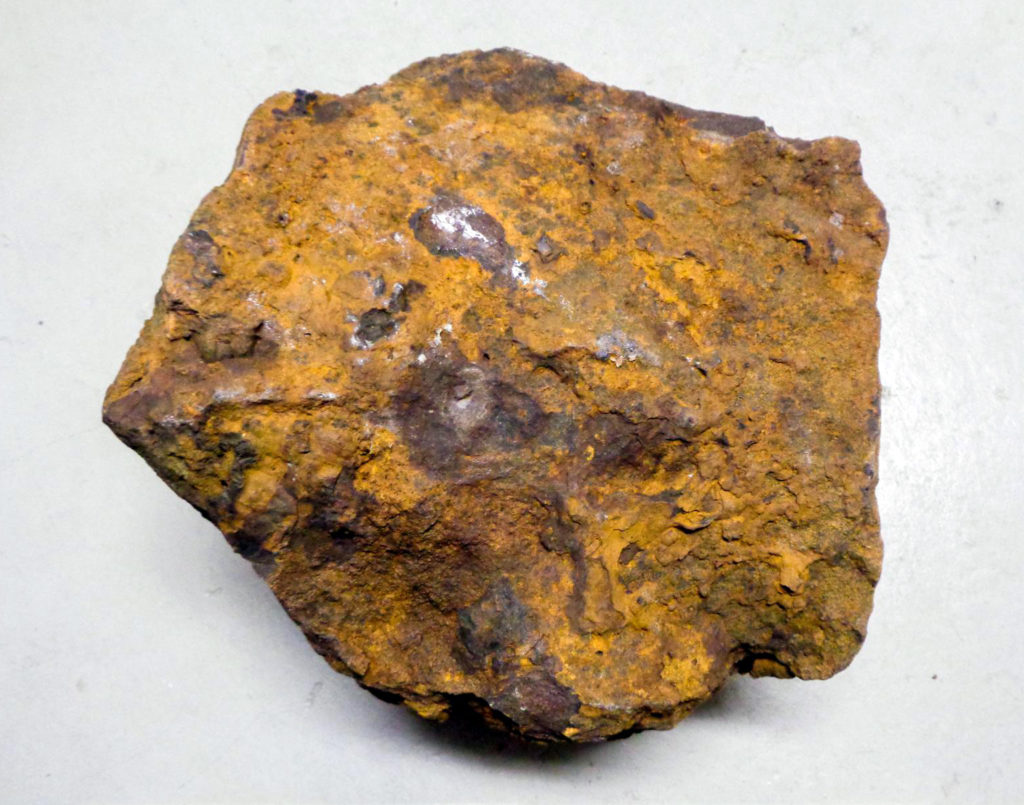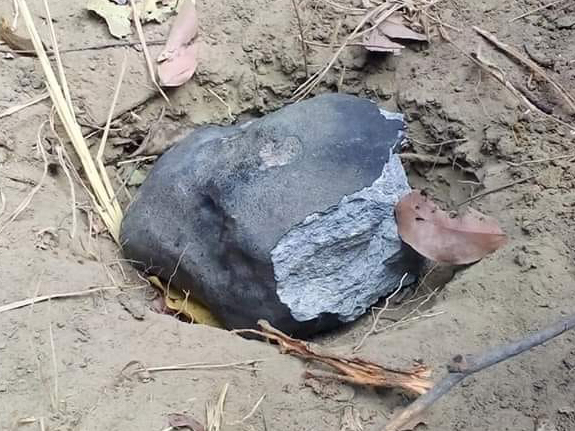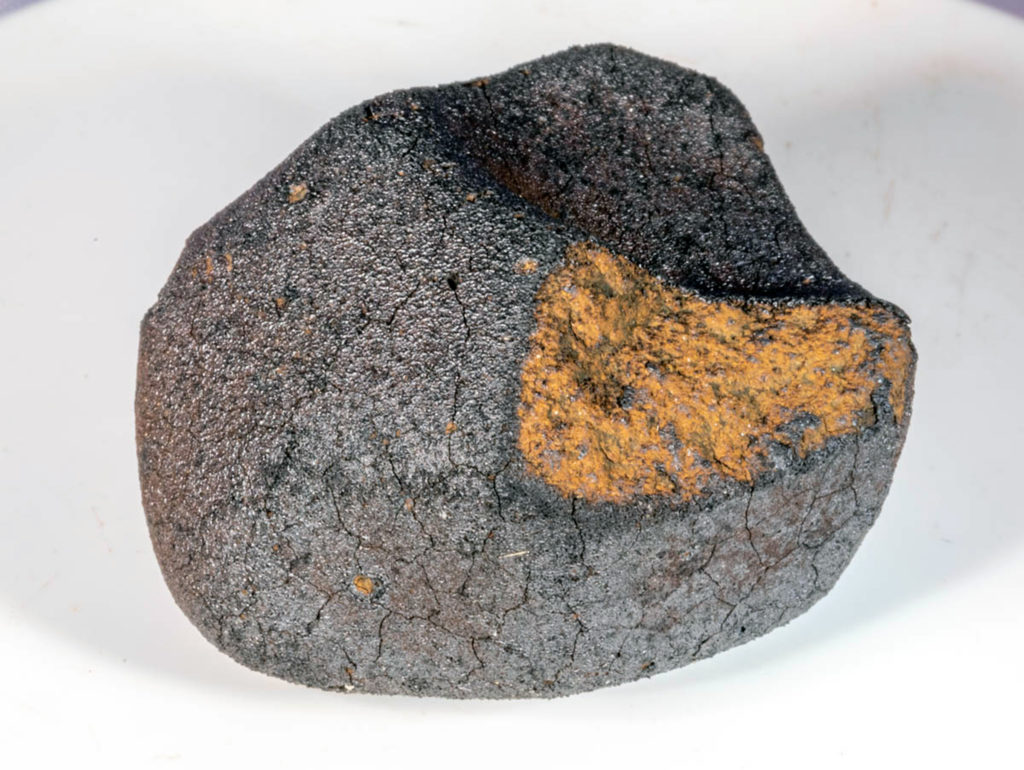‘Pindarri Punju Puri’ (prov.) meteorites (LL, >1 kg) of 10 May 2025 bolide (21:57:30 UTC) found in ‘Lake Hope’, Shire of Dundas, Goldfields–Esperance, Western Australia, Australia
Last update: 8 July 2025 (10:00 CEST)
A 450-500-gram meteorite (LL ordinary chondrite) with a size “just under a tennis ball” and a “sort of a greeny” interior of the bolide of 10 May 2025 (21:57:30 UTC / 5:57:30 a.m. AWST, 11 May 2025) was found by Ravensthorpe police officer and amateur meteorite searcher Marcus Scott on a dry surface area of the partly water covered Lake Hope, a salt lake in the western Ngadju Indigenous Protected Area in the western Shire of Dundas, west of Norseman on 17 May 2025, most likely very close to location 32°33’36.9″S 120°23’09.7″E, which would be in the centre of the calculated fall area, published by the Desert Fireball Network. The meteorite was found after only four hours of search on foot. It fragmented into several smaller pieces (blown away mainly from the sky-facing part of the meteorite) on impact while the main fragment (ground-facing part of the mass) caused one small impact pit in the dry salt lake surface. Scott picked the meteorite fragments up with fresh rubber gloves and put them into clip seal bags. He says he found the meteorite “thanks to the very smart people at Curtin Uni that have got the desert fireball system. They posted online their sort of estimated sort of ground of where it fell. And yeah, it was a beautiful day on Saturday so I went for a walk.” The Desert Fireball Network had created a map of the calculated possible fall area and published it online on 11 May 2025. The bolide’s trajectory, the dark flight trajectory and the possible impact location had been calculated by experts from Curtin University’s Desert Fireball Network. DFN’s Dr Eleanor Sansom and Dr Hadrien Devillepoix were actually flying above the impact site during their first aerial reconnaissance mission at the moment when Scott found the meteorite. They learned about the find from the media on 18 May 2025. They had also spotted two additional potential fall sites which could be less than two kilometres away (within the calculated fall area) from the site where Scott found his mass. The approximately nine-second luminous trail of the bolide, travelling south at a very shallow angle, revealed several flares or fragmentation events. It reportedly extinguished at an altitude of about 26 km. The meteoroid is reported to have had an unusual pre-atmospheric orbit in the inner solar system. A few days later Dr Hadrien Devillepoix and other researchers from Curtin University went back to the predicted fall area and found two additional meteorite masses within the calculated fall area, the first one (Lake Hope #2) weighing around 400 grams, most likely near location 32°32’59.9″S, 120°24’03.6″E. The second meteorite of the day (Lake Hope #3), a fully fusion-crusted specimen, was found at around location 32°32’45.8″S 120°24’00.6″E, about 440 metres south of the fall site of Lake Hope #2 and about 2 kilometres northeast of the fall location of Scott’s find (Lake Hope #1). On impact the two new finds both sank deeper into the lake bed (~ 10-15 cm) than the meteorite found by Scott, most likely because the sand was softer and wetter. Shortly after the fall we mentioned that we would appreciate having this meteorite fall registered in the MetSoc Bulletin under an indigenous Ngadju place name for the ‘Lake Hope’ area to honor the Ngadju language which is severely endangered to become extinct. With great pleasure we learned that on 1 July 2025 it was announced by the DFN that this meteorite fall will be given the indigeneous name ‘Pindarri Punju Puri’. The meteorites have been analysed and classified as LL chondrites at Curtin University’s Space Science and Technology Centre (SSTC) and at Monash University, as published on the DFN website on 10 June 2025. It is planned to have them publicly exhibited at the WA Museum in the future. Congratulation to Marcus Scott and DFN on their discoveries! A fragment of the first found meteorite mass has been on display at Western Australian Museum Boola Bardip’s Origins Gallery in Perth since the 28th week of 2025.

The meteorite’s main fragment in its impact pit surrounded by some smaller fragments. Photo: Marcus Scott
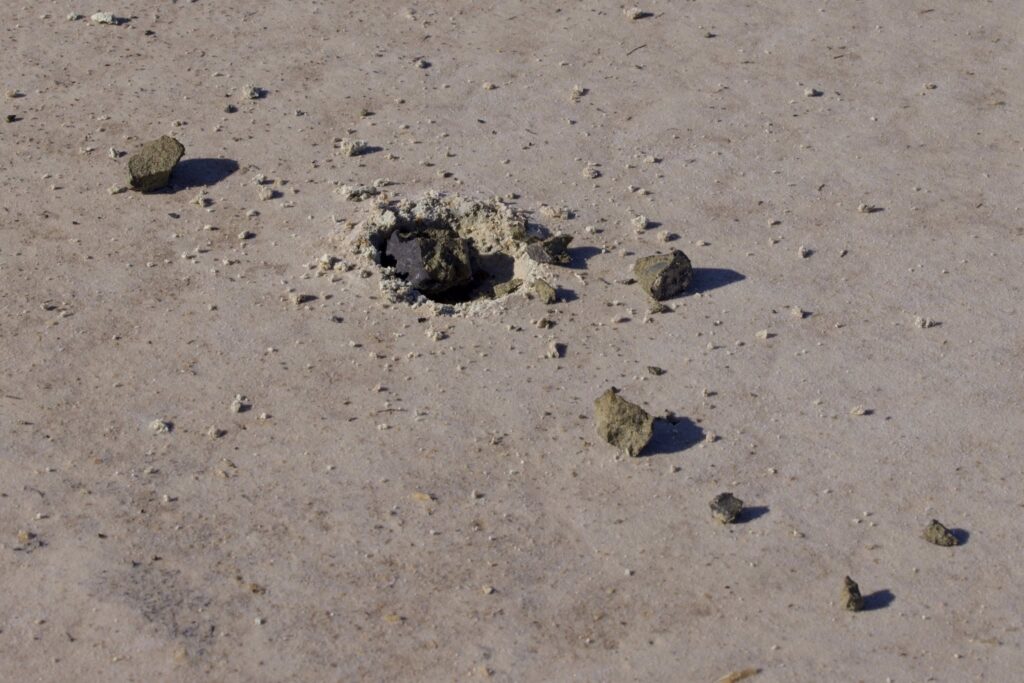
The meteorite’s main fragment in its impact pit surrounded by some smaller fragments. The mass fragmented into several pieces on impact. Photo: Marcus Scott
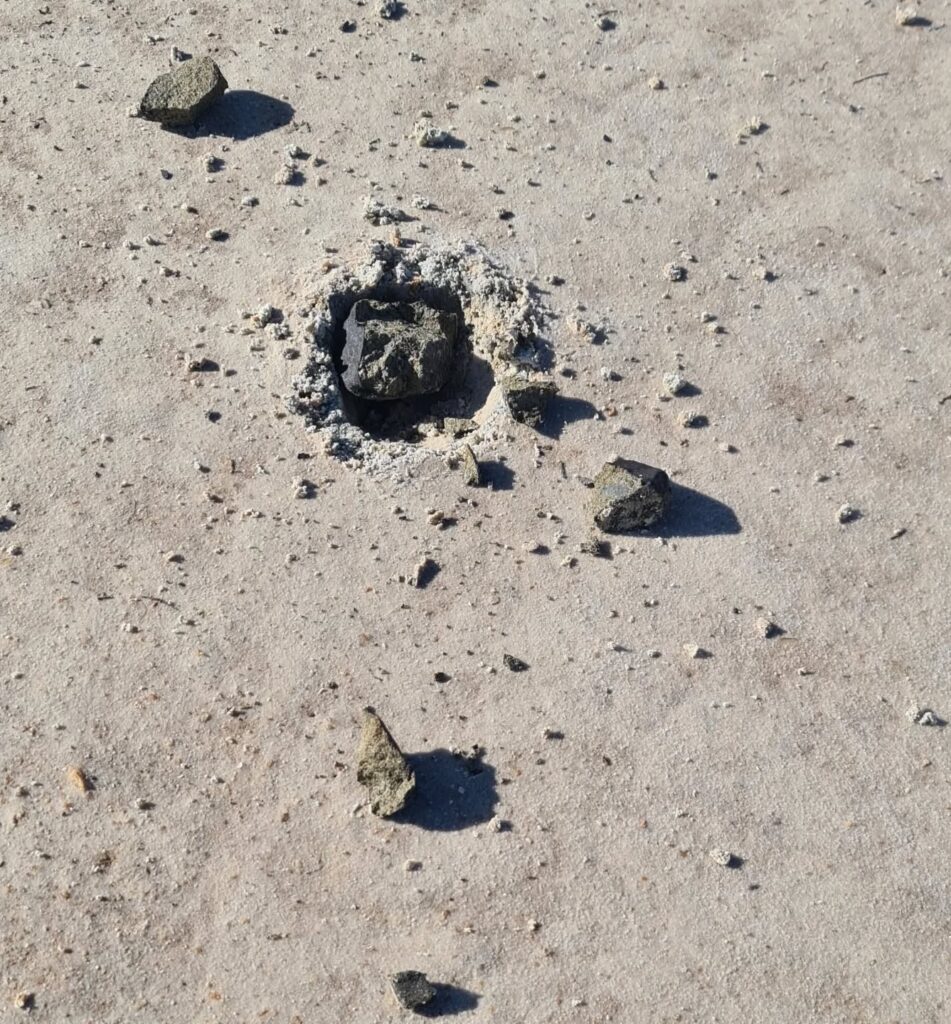
The meteorite in its impact pit. Photo: Marcus Scott
Impact pit after removal of the meteorite main fragment. Photo: Marcus Scott

Meteorite fragments at the impact location on the salt lake surface. Photo: Marcus Scott
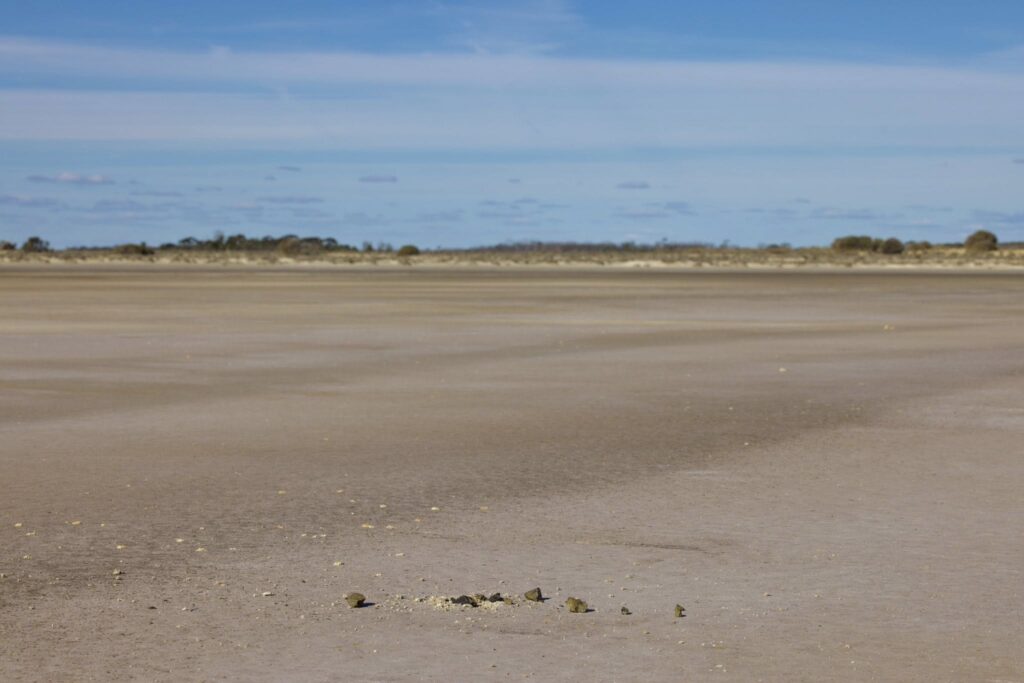
Meteorite fragments at the impact location on the salt lake surface. Photo: Marcus Scott
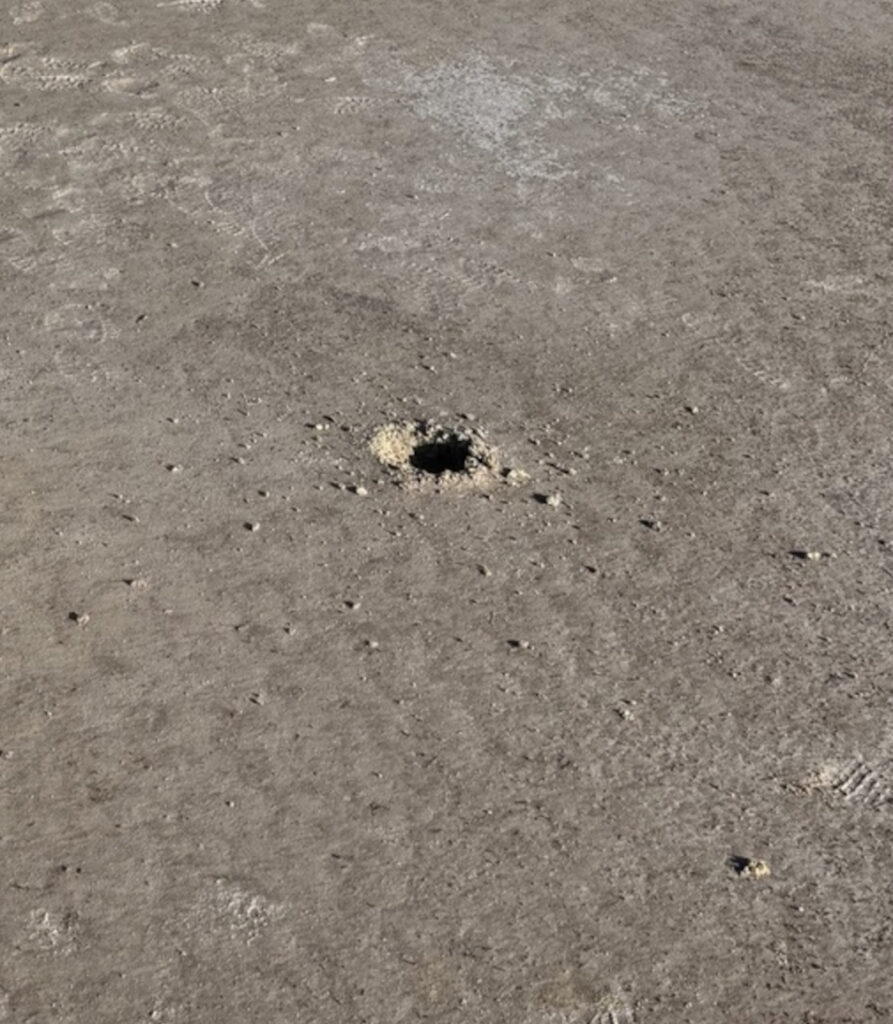
The impact pit on 21 May 2025. Photo: Curtin University
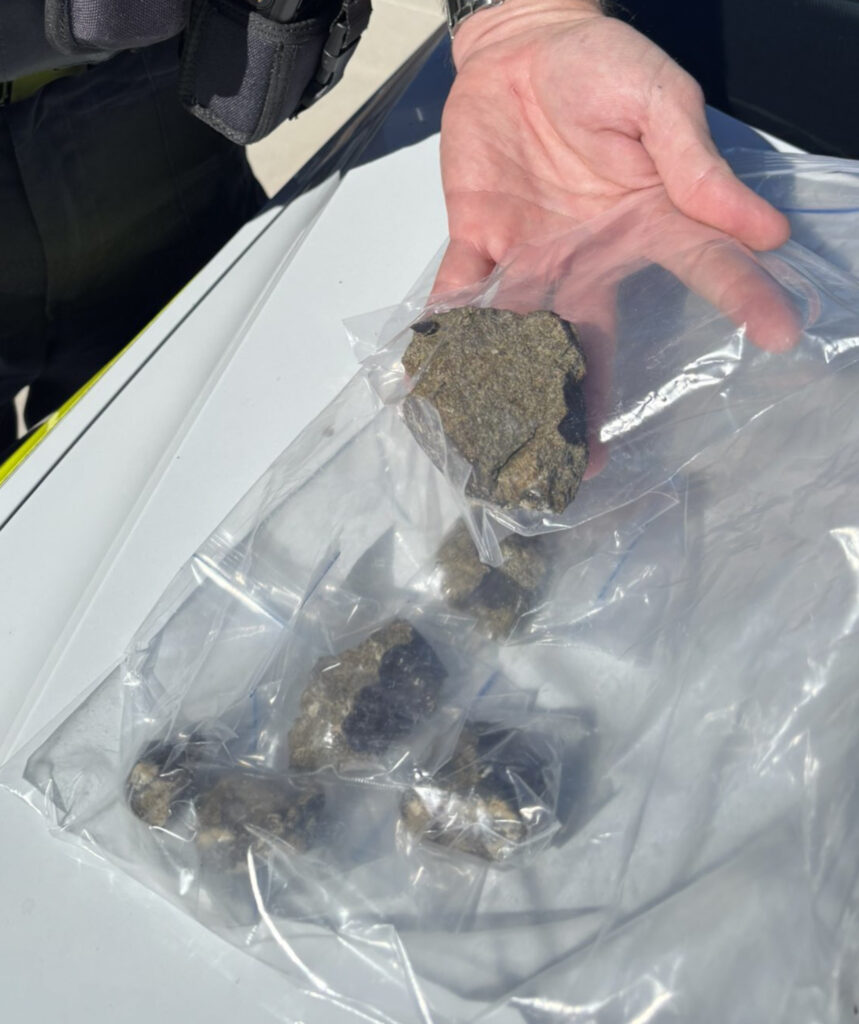
Marcus Scott presenting six larger fragments of his find to colleagues. Photo: Marcus Scott/Ravensthorpe Police (19 May 2025)
The calculated possible fall area (50km²), as published by the Desert Fireball Network on 11 or 12 May 2025. (KML file download) Image: DFN
Second find (21 May 2025, ~ 400 grams)
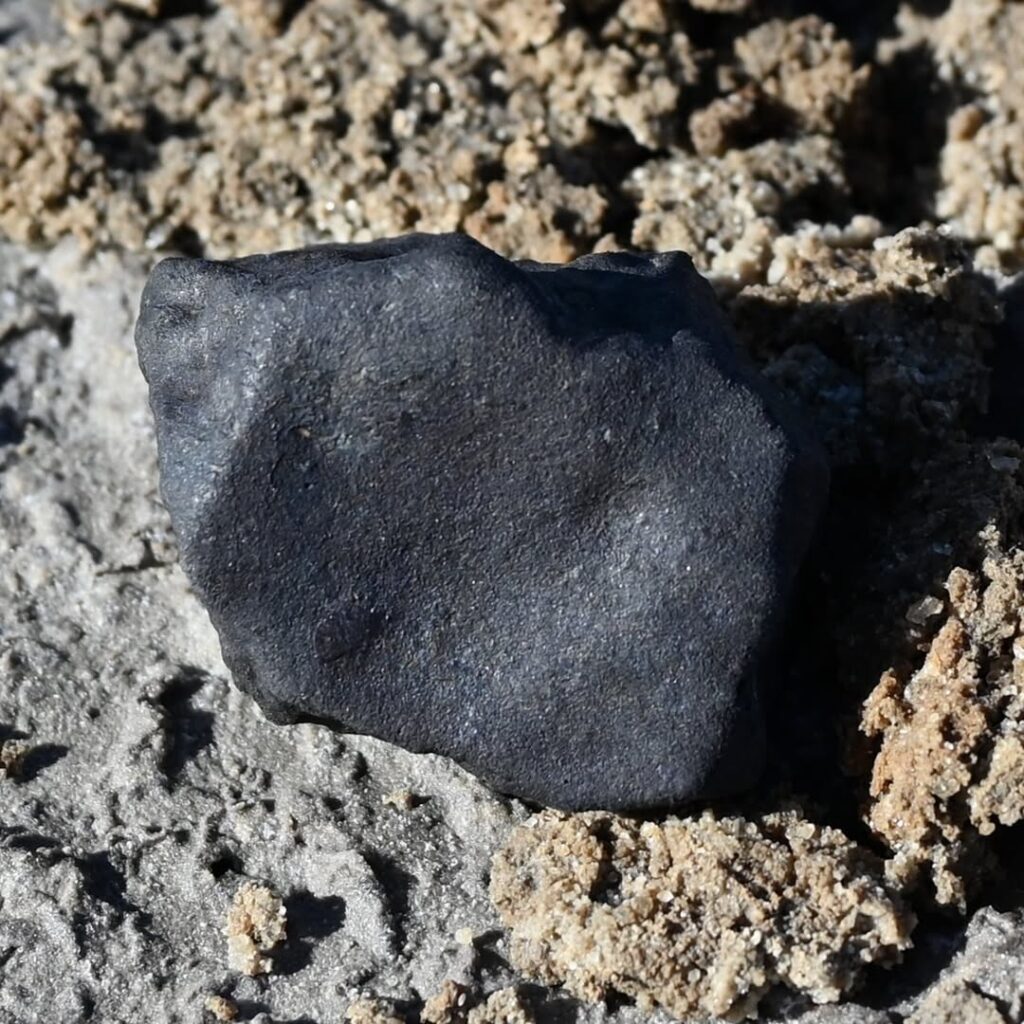
The cleaned fusion-crusted second ‘Pindarri Punju Puri’ meteorite. Photo: DFN

The cleaned fusion-crusted second ‘Pindarri Punju Puri’ meteorite. Photo: DFN
Moved Mia Walker holding the meteorite in her hand for the first time. Video: Curtin University
Search team Mia Walker holding the second find of the fall, found by Curtin University search team on 27 May 2025. Image: 9News
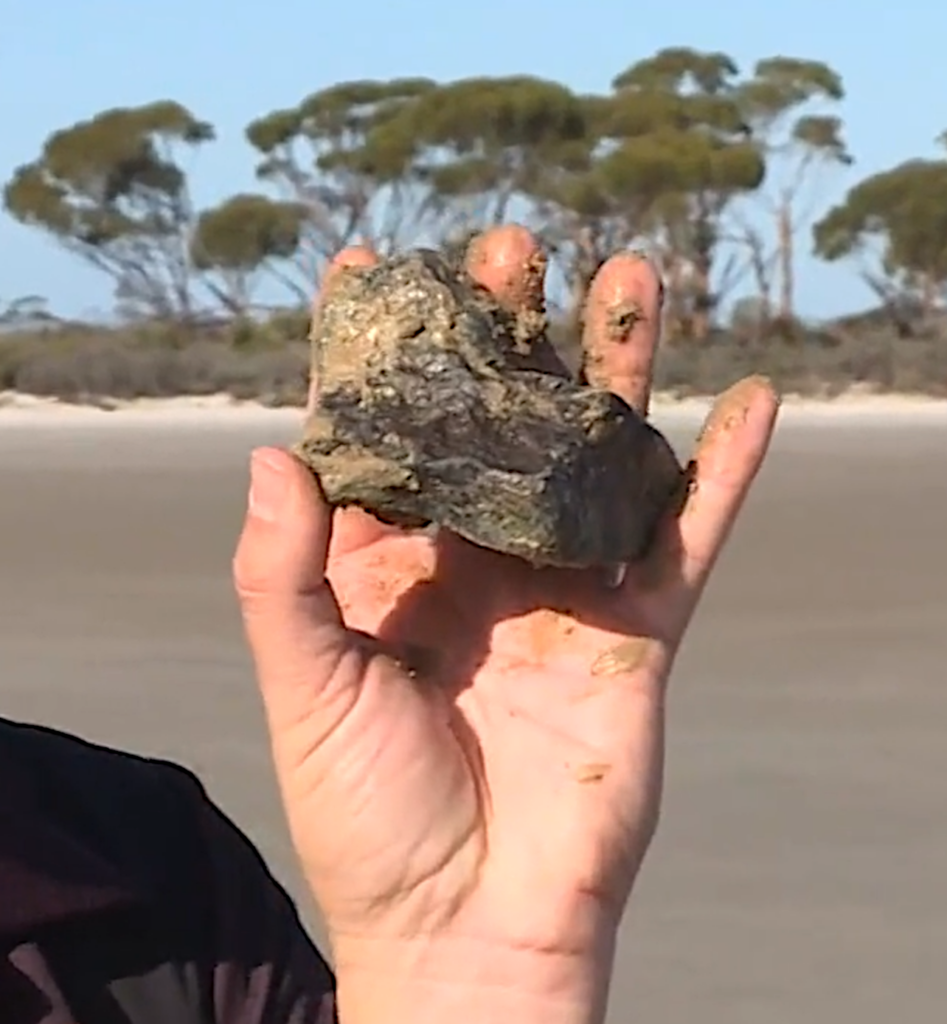
Search team Mia Walker holding the second find of the fall, found by Curtin University search team on 27 May 2025. Image: 9News
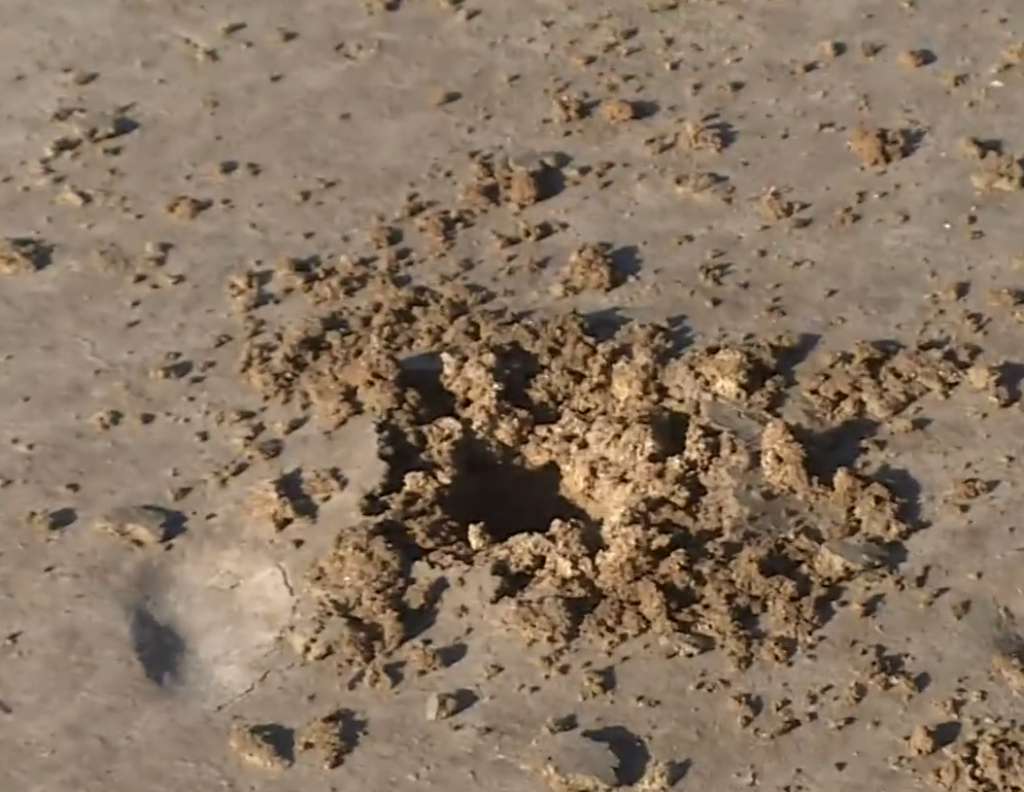
Impact hole of the second find after removal of the meteorite. Image: 9News
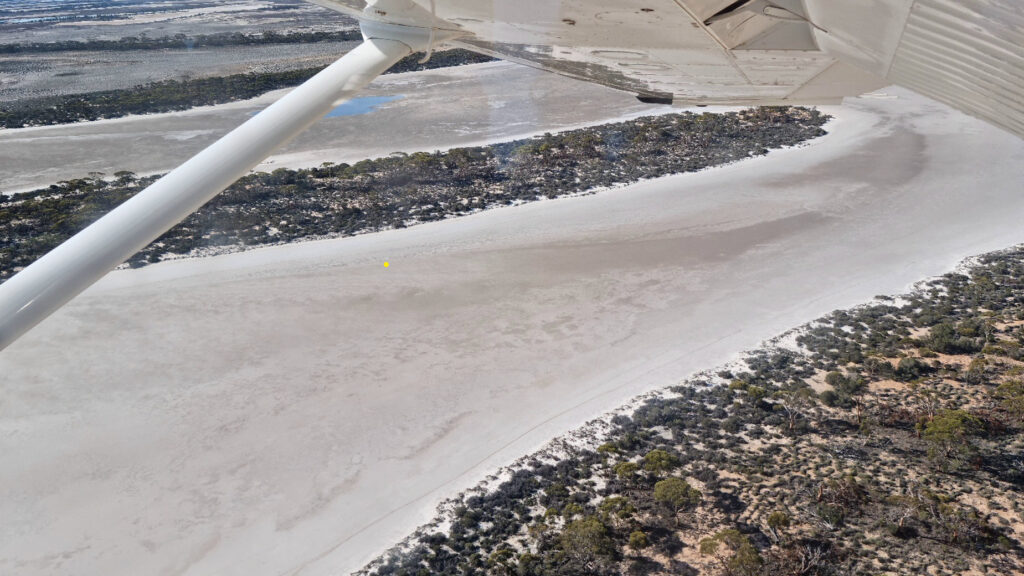
Aerial view of the area around the fall site of Pindarri Punju Puri #2 (according to our own evaluation of the publicly available photos the impact site seems to be where the yellow spot is on the photo above, but this has not been officially confirmed). Photo: Desert Fireball Network
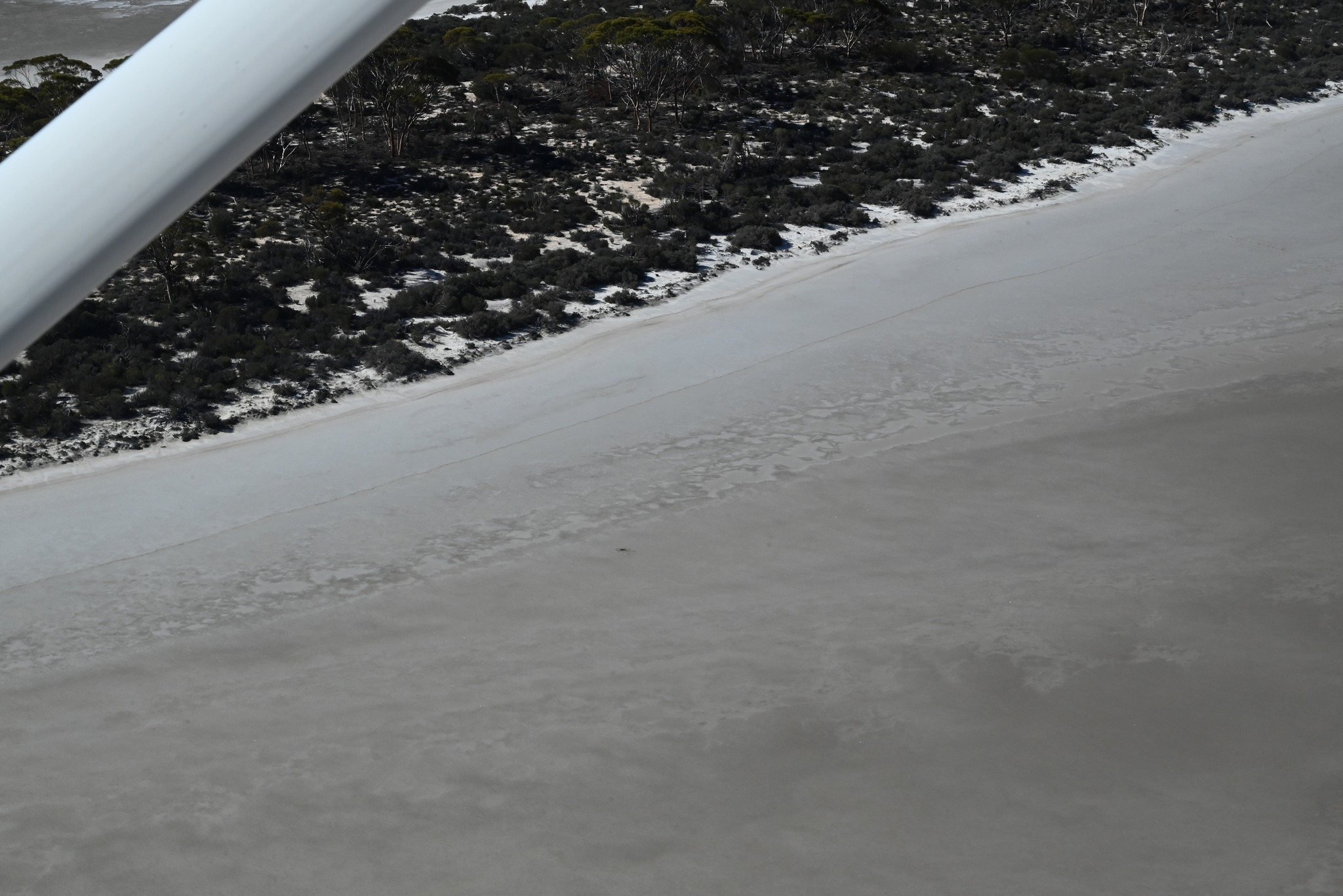
Pindarri Punju Puri #2 impact site (dark spot in the centre of the image) from the air. Photo: Desert Fireball Network

Pindarri Punju Puri #2 impact site from the air. Photo: Desert Fireball Network
Pindarri Punju Puri #2 impact site from the air. Photo: Desert Fireball Network
Third find (21 May 2025)
Approaching the fall site. Video: Curtin University
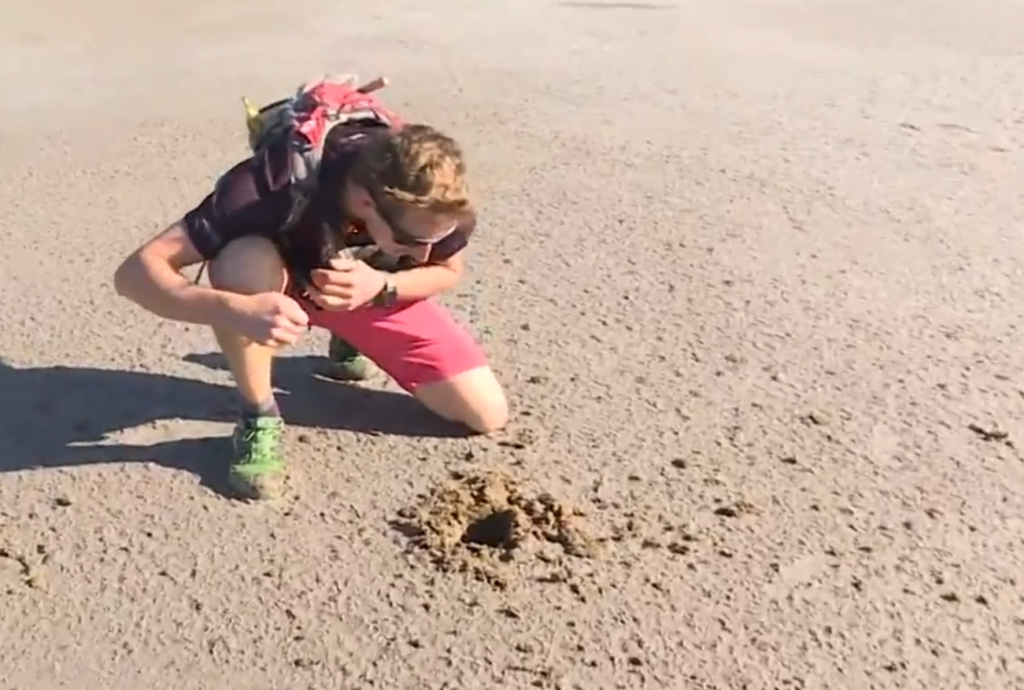
Dr Hadrien Devillepoix having just found the impact hole of a third meteorite mass. Image: 9News
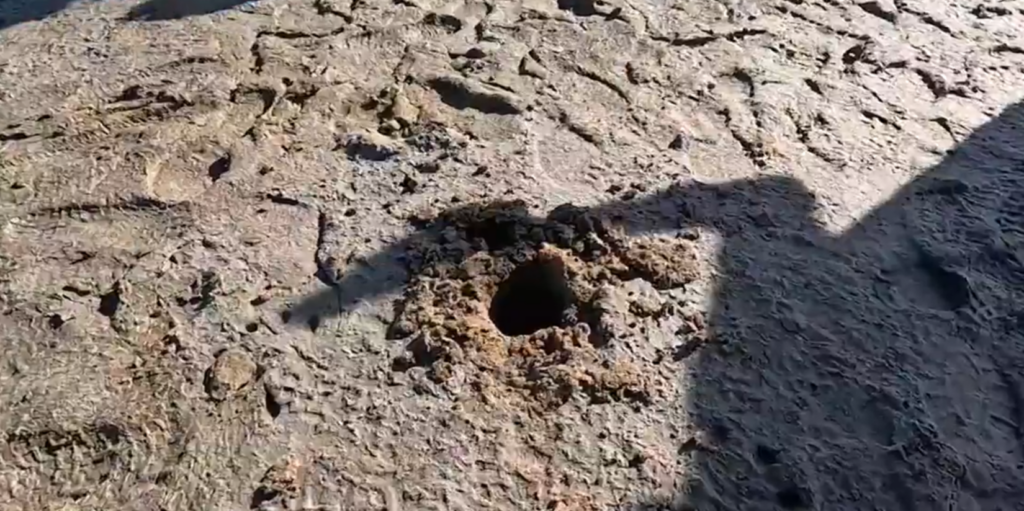
Impact hole of the third find. Image: 9News
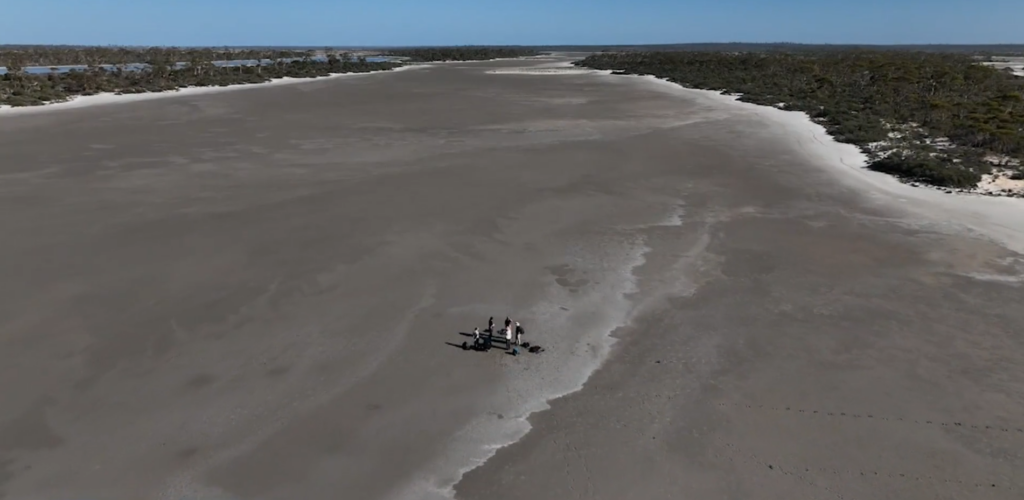
Impact location of a third meteorite mass. Image: 9News
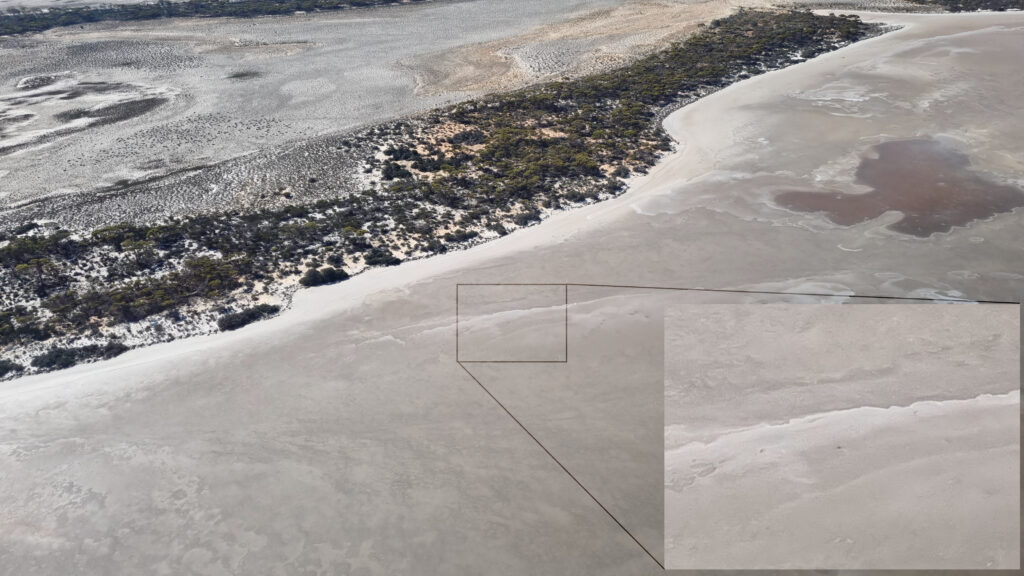
Pindarri Punju Puri #3 fall site from the air. Photo: Curtin University
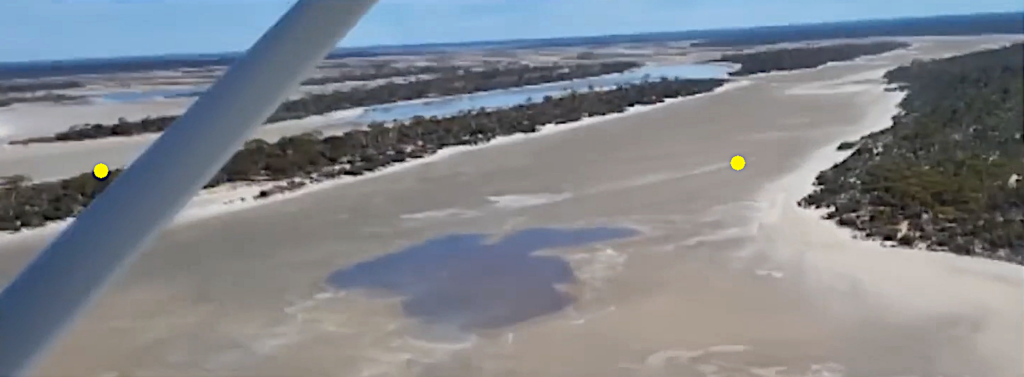
Approximate fall locations of Pindarri Punju Puri #2 (left) and #3 (right) meteorites on the salt lake. Image: DFN

Dr Hadrien Devillepoix presenting the packaged masses of Pindarri Punju Puri #2 and #3 together with the larger fragments of Pindarri Punju Puri #1. Photo: Curtin University
THE BOLIDE

The bolide’s long luminous trail in a composite image of a recording by DFN station in Red Gully, one of only two DFN cameras recording the bolide from more than 400 km away. Image: Desert Fireball Network
Video of the bolide on 11 May 2025 (AWST). Video: video of a friend prospecting for gold, published by Waldemar Eliaschewsky
“It’s Mother’s Day. We’ve got to start coming out here a bit later because it’s six o’clock and it’s dark. I can’t go prospecting yet because I get scared of snakes and … Oh look, look, look, look, look, meteor. Wow. What a sight!” (unknown)
Video of the bolide (between 0:27 and 0:35 min. running time) recorded by Brian Robbins while probably driving west on Great Eastern Highway outside of Coolgardie on 11 May 2025 (AWST). Video: Brian Robbins/G&B Haulage Esperance
“What caught my eye was what I thought or to believed to be lightning on the north side . . . it was quite cloudy and overcast this morning, it was still dark obviously and then you could just see the light, the flame flaming up and then extinguishing a couple times as it bolted through between the breaks of the clouds and across the horizon […] I thought ‘oh yeah bloody shooting star’ which it was well and truly too bright, too fast to be one, I didn’t think much of more of it, in all honesty, I was just quite amazed what I’d seen. […] I’ve seen plenty of shooting stars, like I said though they’re nowhere near as bright, or had the effects with the explosions or the flames like that did have. […] This morning was definitely a once off, and probably never again.” (Brian Robbins, 11 May 2025)
Video of the bolide on 11 May 2025 (AWST). Video: Jorg Fregin
Video of the bolide on 11 May 2025 (AWST) recorded from Mandurah, about 430 km west of the fall site. Video: Laura Bakitch (published by Mark Bakitch on 11 May 2025)
Video of the bolide on 11 May 2025 (AWST). Video: Narelle Bentley
“I looked up and there was a long, bright green streak and I was already in video mode so I recorded it … I only got the end of it but was it was still pretty cool footage.” (Narelle Bentley)
MEDIA
GFO report about the recovery of the Mother’s Day Meteorite (1 June 2025)
Video: 9News (27 May 2025)
Video: ABC News (Australia), 19 May 2025
Video: ABC News (Australia), 19 May 2025
Interview with finder Marcus Scott (6PR, Perth Today, 19 May 2025)
“It’s good. It’s good to find sort of the space rocks at any stage but one that’s only been on the earth for seven days is very unique. […] It’s about mid 500 grams all up. It kind of looks like a rock. […] It’s got a dark exterior and a different coloured interior. So the interior is sort of a greeny type colour. […] Just under a tennis ball. […] So yeah, it’s not huge. (Marcus Scott)
Interview with finder Marcus Scott and DFN’s Dr Eleanor Sansom (ABC, PM, 19 May 2025)
“Meteorite hunting is a hobby, one of the many hobbies. So, yeah, just enjoy being in the bush and enjoy walking and well, this sort of thing is a byproduct. […] The only trouble is a lot of the salt lake out there has either got water in it or a lot of salt bush. That makes it a lot harder to spot, but this was in an open area and quite easy to spot. The kangaroo prints and the emu prints from a distance also look like a meteorite fall impact. So, yeah, you can find yourself wasting a lot of time chasing after them. […] You know, life’s full of experiences. And even though this is one of those ones where you don’t get to keep it, yeah, it’s just something you can add to the list of things you’ve found and things you’ve done. It’s definitely something worth finding.” (Marcus Scott)
Video: 9 News Media (11 May 2025)

